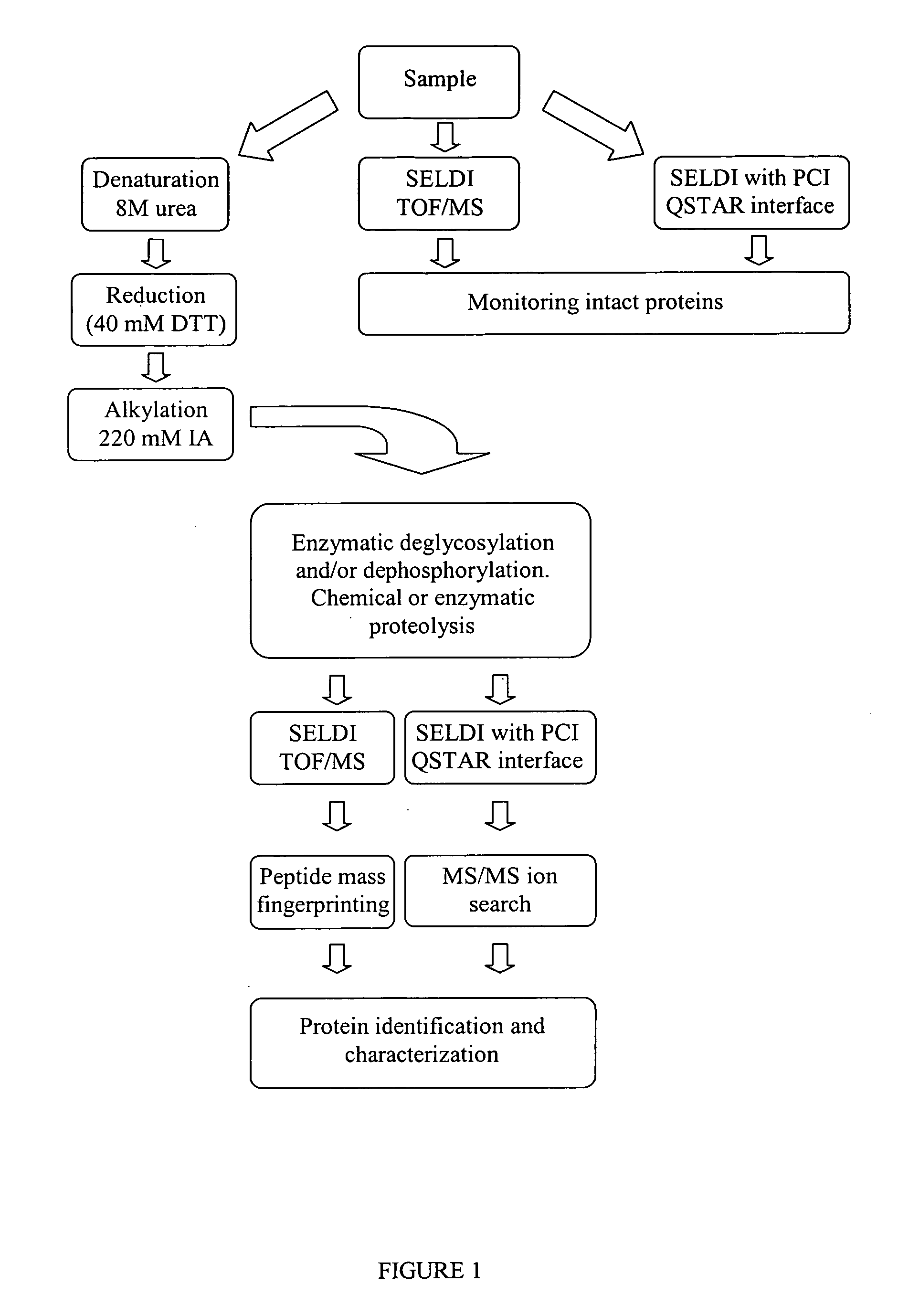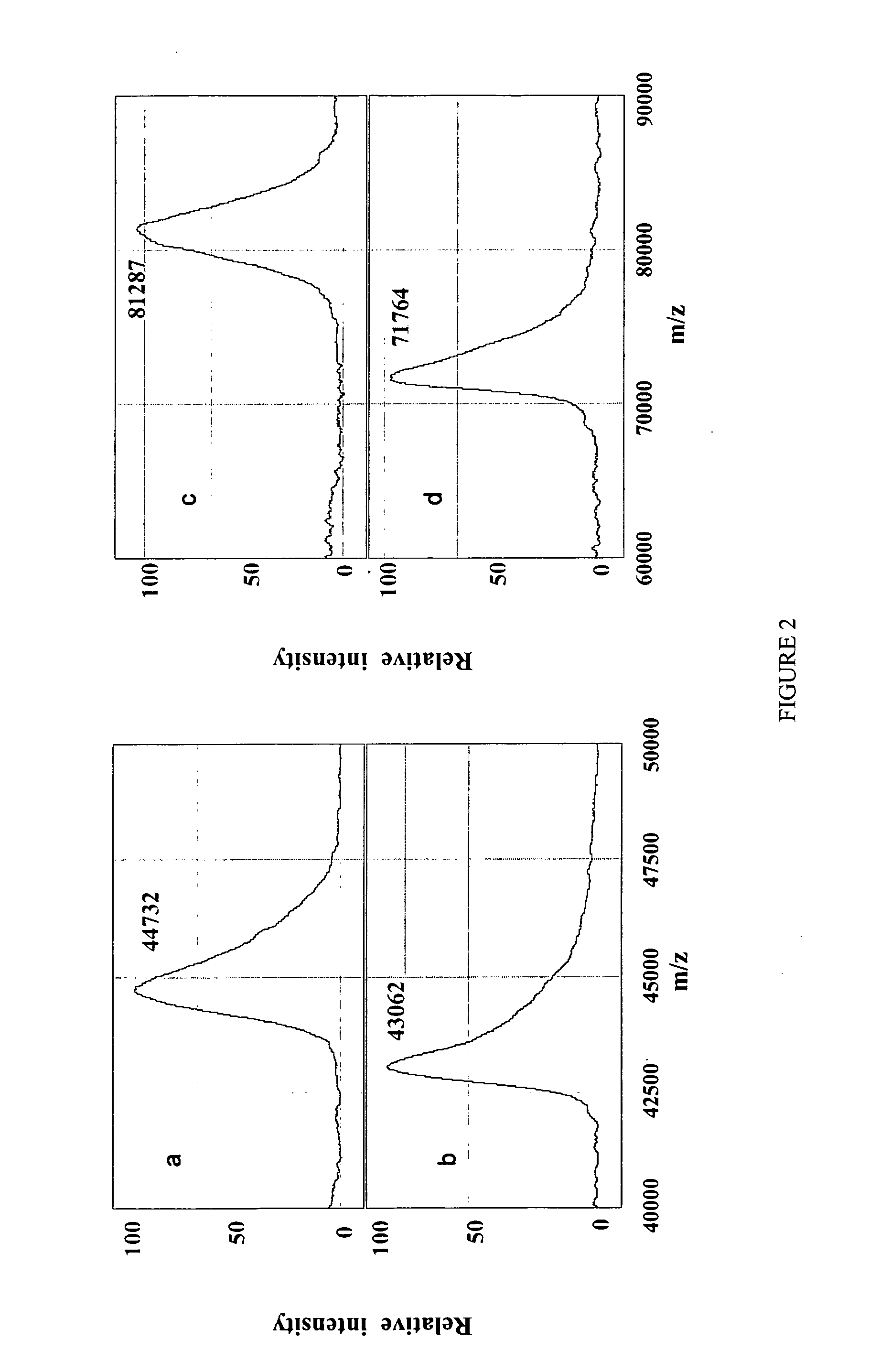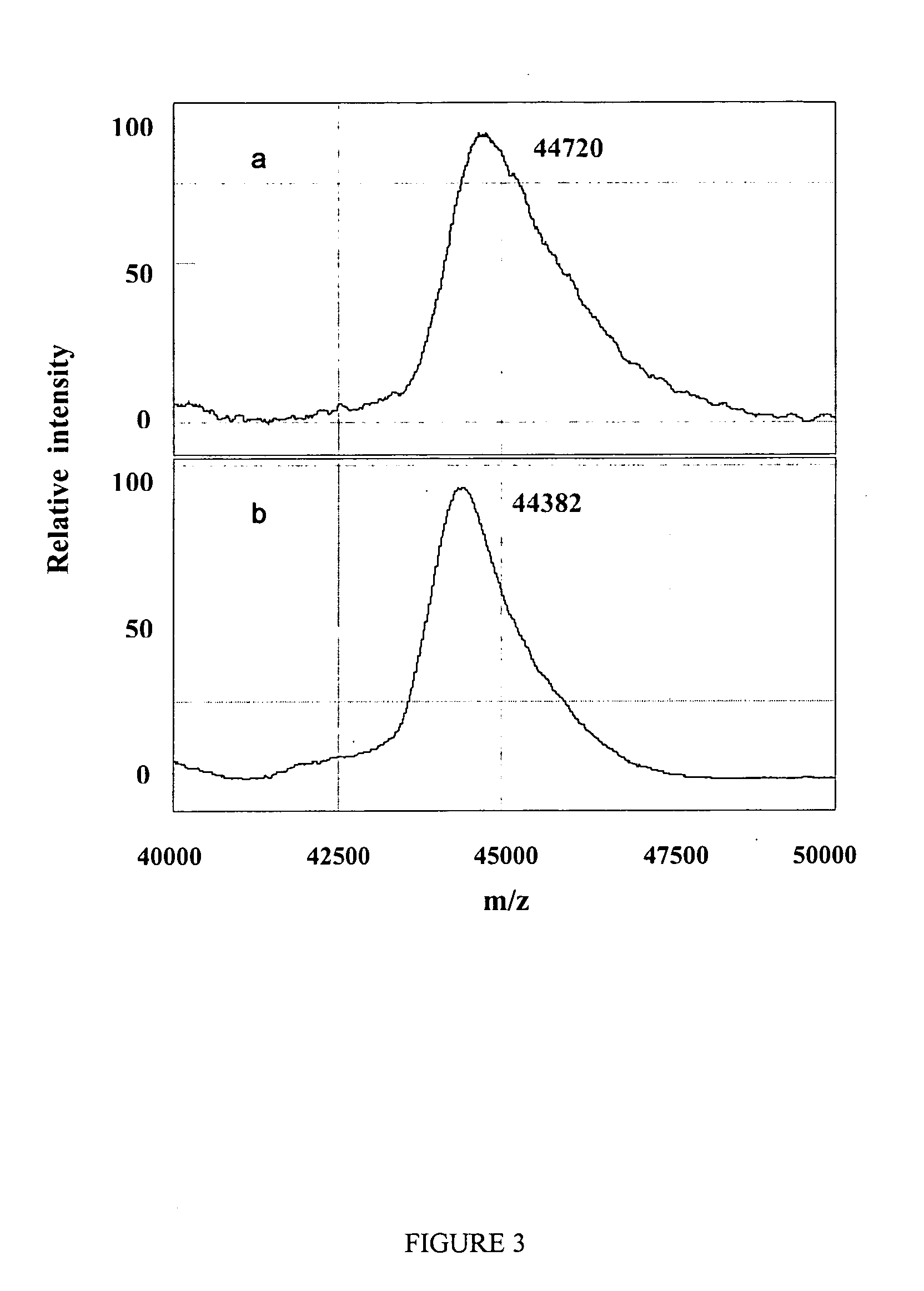Complete chemical and enzymatic treatment of phosphorylated and glycosylated proteins on protein chip arrays
a protein and enzymatic technology, applied in the field of proteomics, can solve the problems of difficult to imagine complex inability to predict the environment of solid small surfaces, and poor utilization of biochemical reactions on solid surfaces, etc., to achieve short reaction time, rapid and simple, and simple and sensitive
- Summary
- Abstract
- Description
- Claims
- Application Information
AI Technical Summary
Benefits of technology
Problems solved by technology
Method used
Image
Examples
example 1
Materials and Methods
[0114] Human EGFRED (Epidermal growth factor receptor ecto domain) was a gift from Dr. J. Baardsnes of the Biotechnology Research Institute, National Research Council of Canada, Montreal, Canada. Cesium Iodide / octapeptide mixture and reserpine were gifts from MDS Sciex, Toronto, Canada. Trypsin was obtained from Boehringer Mannheim (Ingelheim, Germany) and used without further purification. Urea, ammonium bicarbonate, α-cyano-4-hydroxy-cinnamic acid (CHCA), sinapinic acid (SPA), dithiothreitol (DTT), iodoacetamide(IA), 2,2,2-trifluoroethanol (TFE), adrenocorticotropic hormone (ACTH), polypeptide P14R, alkaline phosphatase (ALP), chicken ovalbumin, chicken lysozyme, bovine insulin, bovine serum albumin, horse cytochrome C, bovine fetuin and cyanogen bromide were obtained from Sigma (St. Louis, Mo.). Trifluoroacetic acid (TFA) and formic acid were obtained from Pierce (Rockford, Ill.). Neuraminidase, N-glycosidase F, O-glycosidase, endoproteinases Arg-C, Asp-N, G...
example 2
On-Chip Protein Deglycosylation
[0125] Ovalbumin is a 44.73 kDa hydrophobic glycoprotein which has a disulfide bridge, one N-glycosylation and four phosphorylation sites22, 25, 43. These characteristics make it an attractive example for the assessment of the on chip protein analysis of the present invention. The oligosaccharide moiety of ovalbumin is heterogeneous with an average of 1.65 kDa43. In the experiments performed the average molecular weight of ovalbumin as measured was decreased by 1.67 kDa to 43.06 kDa (FIGS. 2a and b) when N-deglycosylated on an H4 chip, indicating that the glycan side chain was completely removed. N-deglycosylation proceeded at a slower rate on the hydrophilic NP20 chip, as significant amounts of intact ovalbumin and a byproduct were seen. After 2 hr of reaction loss of only 1.376 kDa from ovalbumin molecular weight (data not shown), was observed. This indicates that the chemistry of both the protein and chip surface plays an enabling role in the degly...
example 3
On-Chip Protein Dephosphorylation
[0128] Most aspects of cell life are regulated by protein phosphorylation; abnormal phosphorylation can result in or be caused by disease23. At any moment roughly 30% of all mammalian proteins are phosphorylated23. This reversible reaction is regulated by the concerted actions of protein kinases and phosphatases, which affect phosphorylation and de-phosphorylation respectively.
[0129] Ovalbumin, with its four phosphoserine sites, was chosen to investigate protein dephosphorylation. This process resulted in a mass difference of approximately 338 Da less than native ovalbumin, which corresponds to the removal of the four phosphate molecules (FIG. 3). Similarly to results mentioned above for the N-deglycosylation reaction, negligible dephosphorylation activity was observed when using the NP20 chip even when increasing phosphatase concentration and / or extending reaction time (data not shown). This suggests that chips with a hydrophobic surface are proba...
PUM
| Property | Measurement | Unit |
|---|---|---|
| molecular weight | aaaaa | aaaaa |
| diameter | aaaaa | aaaaa |
| temperature | aaaaa | aaaaa |
Abstract
Description
Claims
Application Information
 Login to View More
Login to View More - R&D
- Intellectual Property
- Life Sciences
- Materials
- Tech Scout
- Unparalleled Data Quality
- Higher Quality Content
- 60% Fewer Hallucinations
Browse by: Latest US Patents, China's latest patents, Technical Efficacy Thesaurus, Application Domain, Technology Topic, Popular Technical Reports.
© 2025 PatSnap. All rights reserved.Legal|Privacy policy|Modern Slavery Act Transparency Statement|Sitemap|About US| Contact US: help@patsnap.com



